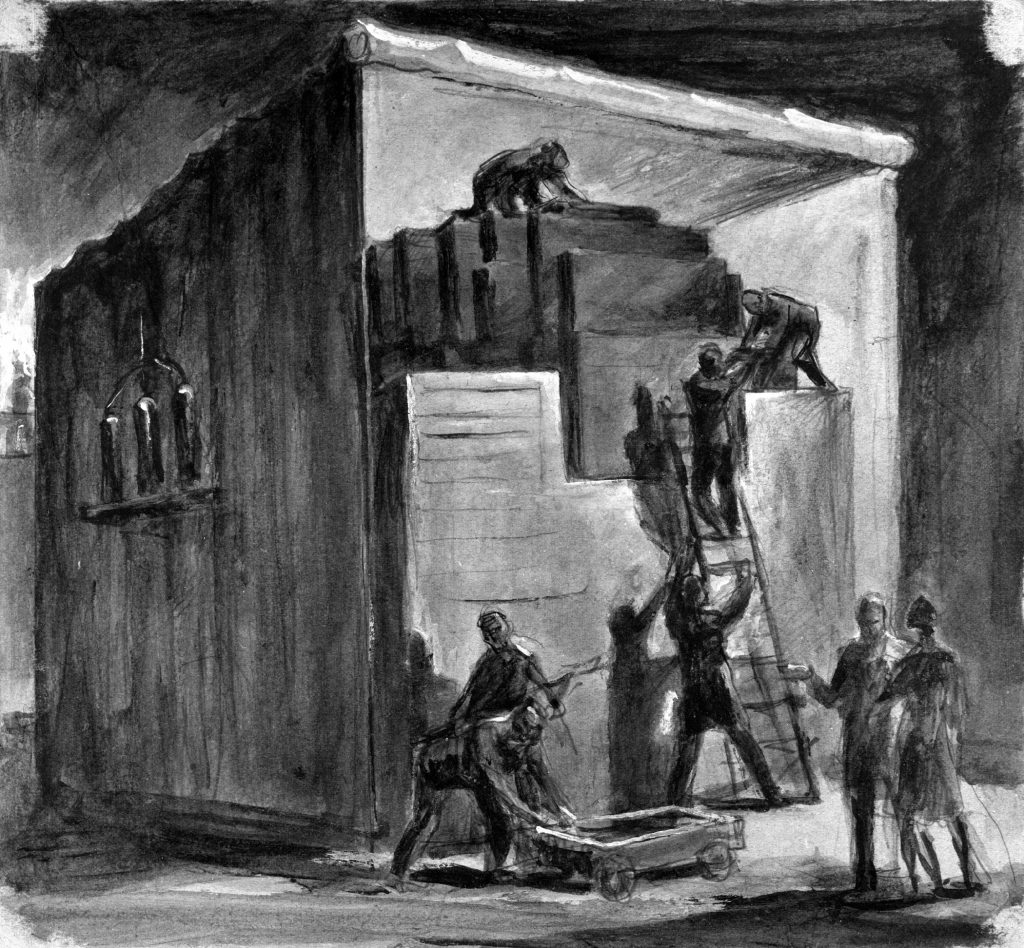Kenneth Stewart Cole was a Principal Biophysicist at the University of Chicago’s Metallurgical Laboratory (“Met Lab”) during the Manhattan Project.
In 1942, Cole began working as a biophysicist at the Met Lab. While at the Met Lab, he took the lead on researching the biological effects of radiation from the uranium fission chain reaction process. Cole also was responsible for overseeing the biological aspects of Manhattan Project safety procedures.
Like his co-worker Leo Szilard, Cole voted against the decision to drop the atomic bomb on Japan. Expressing his opinion, Cole signed the Szilard Petition, which aimed to stop President Truman from dropping the atomic bomb on Japan.
Early Years
Kenneth Stewart Cole was born on July 10, 1900 in Ithaca, New York. In 1902, he and his family moved to Oberlin, Ohio because his father took a job at Oberlin College. He was close with his younger brother, Robert S. Cole, who would also later work at the Met Lab. Between 1936 and 1942, the brothers published four papers together.
He studied physics at Oberlin College. Taking a break from his degree at Oberlin, Cole also worked for General Electric Research Laboratory at Schenectady. While working at the laboratory, Cole met chemist, Irving Langmuir. Langmuir’s focus on surface films at an air-water interface might have been why Cole focused his studies on the surface membranes of cells.
Afte graduating from Oberlin in 1922, he chose to attend Cornell University for graduate studies. In working toward his Ph.D. at Cornell, Cole developed an electron spectrograph and studied the photographic action of electrons. While at Cornell, he also served as an instructor.
Early Research
In 1923, Cole worked with H. Fricke, who was studying the capacity of suspension in red blood corpuscles, at the Cleveland Clinic. Cole began to commit to biology after working at the Marine Biological Laboratory at Woods Hole on Cape Cod, Massachusetts. At the laboratory, he studied the heat production of sea urchin Arbacia eggs.
On a postdoctoral fellowship sponsored by the National Research Council, Cole worked at Harvard and Woods Hole to study the membrane capacity of sea urchin eggs. After finishing his postdoctoral work in 1928, Cole was awarded a fellowship from the General Education Board and pursued theoretical research on cell membranes at the laboratory of Debye at Leipzig in Germany.
Following his return to the United States, Cole became an Assistant Professor in the Department of Physiology at Columbia University and a Consultant Physicist at Columbia’s Presbyterian Hospital. At Columbia, Cole had a variety of responsibilities. He calibrated radiotherapy machines, advised on cyclopropane safety, reformed the medical physiology teaching laboratory, and gave lectures.
During his summers at Woods Hole, Cole researched sea urchin eggs, fresh water alga Nitella, and the giant nerve fiber of the squid. During a summer at the Cold Spring Harbor Laboratory on Long Island, Cole worked with Fricke and studied the electrical impedance of marine alga Laminaria.
In 1932, Cole married attorney Elizabeth Evans Roberts, who focused on civil rights for much of her career. The two had one son and one daughter.
In 1936, Cole began to work with Howard J. Curtis, a previous co-worker of Fricke. The two scientists worked closely in their studies of the electric properties of biological tissues. The same year, Cole traveled to Britain and met A.L. Hodgkin, a future collaborate of Cole on the study of the squid’s giant nerve fiber.
From 1941-1942, Cole studied as a Guggenheim Foundation Fellow at the Institute for Advanced Study (IAS) at Princeton. At the IAS, he studied literature on non-linear systems.
Later Years
In 1946, Cole became a Professor of Biophysics and Physiology and head of the newly established Institute of Radiobiology and Biophysics at the University of Chicago.
In working on the squid’s giant nerve fiber with George Marmont, a previous colleague at Columbia, Cole helped develop an arrangement to electronically control an internal electrode that Marmont inserted into the fiber. This innovation became the first ‘voltage clamp.’ Experiments with this equipment began in the summer of 1947.
Cole moved to Bethesda, Maryland in 1949 to become the Technical Director of the Naval Medical Research Institute. Dissatisfied with the productivity of the Institute, he left in 1959 to establish the Laboratory of Biophysics in the National Institute of Nervous Diseases and Blindness at the National Institutes of Health (NIH).
After serving as the director for seven years, Cole stepped down, but he remained a Senior Research Biophysicist at the lab. For the fall semester of 1963, Cole was a Regents’ Professor at the University of California Berkeley.
In 1968, Cole published his book, Membranes, ions and impulses. The book provides a comprehensive account of Cole’s work in cell membranes, ions and impulses, as the title implies. It also illustrates Cole’s thinking process and theory work, which is absent from his published scientific papers.
At the age of eighty-three, Kenneth Stewart Cole died on April 18, 1984.
Scientific Contributions
Stewart’s scientific contributions include adding to the understanding of surface membranes of many different types of cells and demonstrating the changes in electrical properties in the membranes of excited and activated cells.
While working at Debye laboratory, Cole and L.E. Sutton looked to improve the centrifuge microscope developed by Edmund Newton Harvey, a previous acquaintance of Cole from Woods Hole. At Columbia, he helped surgeons develop an operation for an aortic aneurysm using an electrically heated wire.
According to a biographical memoir of Cole, his 1938 demonstration with Curtis was a “major landmark.” Together, Stewart and Curtis showed that cells experience a “large increase in membrane conductance during the passage of a nerve impulse, without change of capacitance.”
For more information about Kenneth Stewart Cole, please see the following reference:





